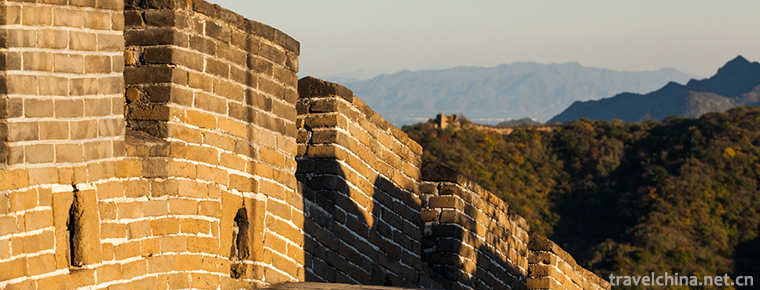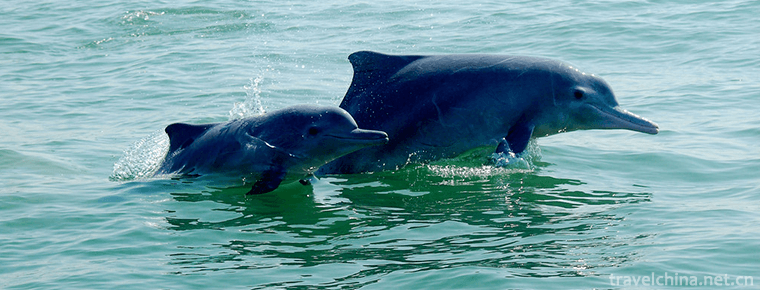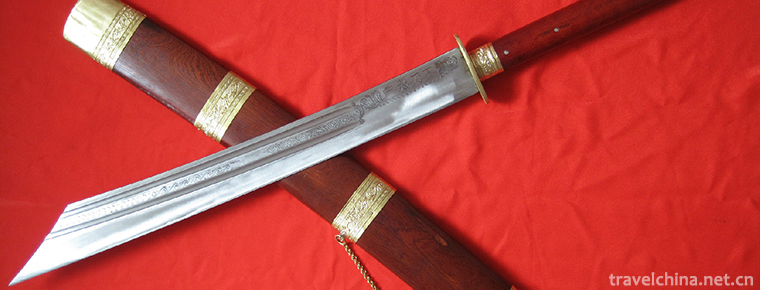The Mutianyu Great Wall
The Mutianyu Great Wall in Beijing is located in Huairou District of Beijing, 73 kilometers from the urban area of Beijing. With a long history and splendid culture, it enjoys the reputation of "the Great Wall, Mutianyu is unique" both at home and abroad. Mountains and mountains overlap in the scenic area, and the vegetation coverage rate reaches more than 90%. The length of the Great Wall is 5400 meters. It is the longest Great Wall in China at present. It is also one of the 16 famous scenic spots in Beijing. It is a national AAAAA tourist area.
The Mutianyu Great Wall was built in 1368 by General Xu Da under Zhu Yuanzhang on the site of the Great Wall of the Northern Qi Dynasty. It is the essence of the Great Wall of the Ming Dynasty. This section of the Great Wall links the Gubeikou in the East and Yongguan in the west. Since ancient times, it has been the military stronghold of Gongwei capital. It has famous landscapes such as Zhengguantai, Big Corner Tower and Eagle Flying and Overturning. The wall of the Great Wall remains intact, which better reflects the ancient charm of the Great Wall.
In the scenic spot, there is a first-class cable car for ascending the city in China, and the projects of Dream Stone City of China and Shibide Slide Road have been developed. The organic combination of Great Wall culture, stone culture and sports, fitness and entertainment has been formed. Former British Prime Minister Major, former US President Clinton and other foreign leaders have visited the Mutianyu Great Wall.
Mutianyu is a small mountain village, located in Beixinying Township, Huairou District (now Bohai Town), where the mountains are rolling and the trees are lush. The Great Wall winding from southeast to northwest at the top of the mountains. The hills here are gentle, steep and straight, so they are very stereoscopic. Because of its important geographical position, Mutianyu Pass is known as "Xiongguan of Dangerous Ridge", and Mutianyu Pass is one of the important passes to support the Beijing Master and the Ming Emperor's Mausoleum in the Ming Dynasty. There have been many wars in this area. The Great Wall of Mutianyu inhabits Yongguan in the West and Gubeikou in the east. It is the eastern section of Huanghua Town in Beimen of Beijing Normal University. It has been called the northern barrier of Gongwei Normal University and imperial mausoleum since ancient times, and Mutianyu Pass is one of the important gates to support Beijing Normal University and Ming imperial mausoleum in Ming Dynasty. (Chang'an Hakka Volume 7 Guanzhen Magazine)
During the Northern Qi Dynasty (550 - 577 AD), the Great Wall was built in Mutianyu and rebuilt in the early Ming Dynasty. According to the textual research, the Mutianyu Great Wall was built by Xu Da (once known as Zhongshan King, also known as Zhongshan) under the supervision of Zhu Yuanzhang in the early Ming Dynasty on the site of the Great Wall of the Northern Qi Dynasty. (Records of Qian'an County in the Twelve Years of Tongzhi recorded: "In the early Ming Dynasty, Xu Zhongshan built a border wall and arrived at Mutianyu from the west of Shanhaiguan, more than 1,700 miles, so the frontier defense was close enough."
"Mutianyu Pass" was built in 1404 (the second year of Yongle in Ming Dynasty). (See The Old News of the Sun, Border Barrier, Volume 153, PP 2466.)
In 1569 A.D. (Longqing Three Years), Qi Jiguang, an eminent General of Zhu Zaiyong in the Ming Dynasty, and governor of Yidu, known to the Premier Jizhen, Changzhen and Baoding, led the army to renovate the 2,000-mile Great Wall, including the Mutianyu section. The Great Wall, which was built in the autumn of Longqing five years and remains until 2013, has been preserved and restored by Mutianyu, is the Ming Chang of the whole country. One of the best preserved sites in the ruins of the city.
Beijing's spring and autumn are not cold or hot, and the climate is moderate. It is an ideal tourist season, especially in autumn, when the weather is high and pleasant. It is called "golden Beijing" by Chinese and foreign tourists. The best tourist month of the year is April, May, September and October.
Characteristics of scenic spots
(1) High vegetation coverage - the scenic area is extremely rich in plant species, with a vegetation coverage rate of over 96%. The scenery varies from year to year, and the scenery is pleasant. It enjoys the reputation of "Great Wall, Mutianyu Duxiu" at home and abroad.
(2) Guantai is unique - Mutianyu Pass is different from Juyong Pass, Shanhaiguan Pass and Jiayuguan Pass. Zhengguantai is composed of three hollow enemy buildings, which are connected and erected. The buildings on both sides are smaller, the middle building is larger, and there are three lookout pavilions above the three enemy buildings. The gate is not set in the center, but in the east of Guantai. The entrance and exit of Guantai are also set up by the enemy buildings on both sides. This unique building of Guantai is rare in the Great Wall.
(3) Enemy buildings are dense - from Muzi 1 (Grand Corner Tower) to Muzi 4 (Zhengguantai), there are 4 enemy buildings within 500 meters; from Muzi 1 to Muzi 20, the length is only 3000 meters, and there are 25 enemy buildings, enemy platforms, wall platforms and pavements. This section of the Great Wall with one enemy building about 100 meters is also rare.
(4) The Great Wall has two-sided pallets - the other sections of the Great Wall, mostly built on the outside side of the Great Wall, while the Mutianyu section of the Great Wall has pallets on both sides. The pallets are the shelters for the guards to fight against the enemy. The two stacking walls mean that both sides fight with the enemy, which shows the important strategic position of Mutianyu Great Wall in history.
(5) External and internal branches coexist, i.e. the Great Wall built outside the main Great Wall in accordance with the needs of warfare and along the mountain with exogenous branches. The outer branch of Mutianyu is the Great Wall connecting the 11th Muzi Platform, and the inner branch is the "bald tail side".
(6) Full of three-dimensional sense - Mutianyu Pass, the lowest terrain, only 486 meters above sea level, eastward, steep rise, to the Great Cape Tower (Muzi 1) less than 500 meters, up 117 meters; to the west, from four Muzi (that is, Zhengguantai) to nineteen Muzi, fluctuations are not large, relatively gentle, from 20 Muzi to the highest point near Niujiao, only through nearly 1. The 0 enemy buildings rose 533 meters from 486 meters at Mutianyu Pass to 1039 meters, making them spectacular.
Farmer's yard is full of farm flavor, cucumbers and beans grown by oneself are all green food. Rainbow trout cultured in mountain springs is rich in nutritional value and has become a local specialty.





























-
Qinzhou Sanniangwan Tourist Area
Sanniang Bay is one of the ten best scenic spots in Qinzhou, Guangxi. It is the home of Chinese white dolphins. Located on the coast of the Beibu Gulf in southern China,.
Views: 128 Time 2019-02-07 -
Quancheng Marine Polar World
Quancheng Marine Polar World is a comprehensive exhibition hall located in Qihe County, Dezhou City, Shandong Province, with a total investment of 1 billion yuan .
Views: 250 Time 2019-02-07 -
The Forging Skill of Achang Husha Knife
Achang household knife forging technology, Yunnan Dehong Dai Jingpo Autonomous Prefecture Longchuan County household Sa Township traditional handicraft, one of the national intangible cultural heritag.
Views: 189 Time 2019-03-28 -
Traditional Cotton Textile Techniques
Chinese traditional textile technology has a long history. Since cotton was introduced from India in the 7th century, Chinese textile industry has changed from linen to cotton. .
Views: 219 Time 2019-04-19 -
chanting of folk tales to the accompaniment of bamboo percussion instruments
Yugu Daoqing, also known as Bangbangqiangzi, is a kind of Han opera in Anhui Province. Beating fishing drums accompanied by singing has become a performance form of fishing drum sentiment. Fishing dru.
Views: 273 Time 2019-07-14 -
Dagu Glacier
Dagu iceberg scenic area is located in Heishui County, Aba Tibetan and Qiang Autonomous Prefecture, Sichuan Province, China, 102.44.15-102.52.46 E and 32.12.30-32.17.06 n, which is a rare modern mountain glacier. .
Views: 348 Time 2020-11-07 -
Introduction to Panzhihua
Panzhihua, a prefecture level city of Sichuan Province, is located in the southernmost end of Sichuan Province, 614 km away from Chengdu in the north, 273 km from Kunming in the South and Lijiang and Dali in the West; it is located in the central and southern section of Panxi Rift .
Views: 330 Time 2020-12-14 -
Geographical environment of Deyang
Deyang City is located in the northeast edge of Chengdu Plain, with geographical coordinates of 30 ° 31 ′ - 31 ° 42 ′ N and 103 ° 45 ′ - 105 ° 15 ′ E. Deyang borders Fucheng District of Mianyang City in the northeast, Santai County of Mianyang City in the East.
Views: 308 Time 2020-12-14 -
Deyang post and Telecommunications
By the end of 2018, the total telecom business of Deyang City has reached 12.95 billion yuan, with 701000 fixed telephone users and 3.998 million mobile phone users. The total length of optical cable at the end of the year is 138000 skin kilometers..
Views: 309 Time 2020-12-14 -
Guangan hydrology
There are two main streams of Jialing River and Qujiang River in Guang'an City. There are more than 700 large and small rivers and streams. There are 35 primary and secondary tributaries with a drainage area of more than 50 square kilometers. Among the.
Views: 325 Time 2020-12-19 -
Social security in Guangan
As of 2019, there are 64000 urban and 217000 rural minimum living allowances in Guang'an City. The per capita subsidy level of urban and rural minimum living security will be increased by 27 yuan and 8 yuan respectively (according to household insura.
Views: 324 Time 2020-12-19 -
Dazhou hydrology
The rivers in Dazhou city mainly belong to the Jialing River water system, which is a tributary of the Yangtze River. It originates from Daba Mountain and distributes in the form of branches from north to south. Qianhe River, Zhonghe River and Houhe Riv.
Views: 170 Time 2020-12-20





